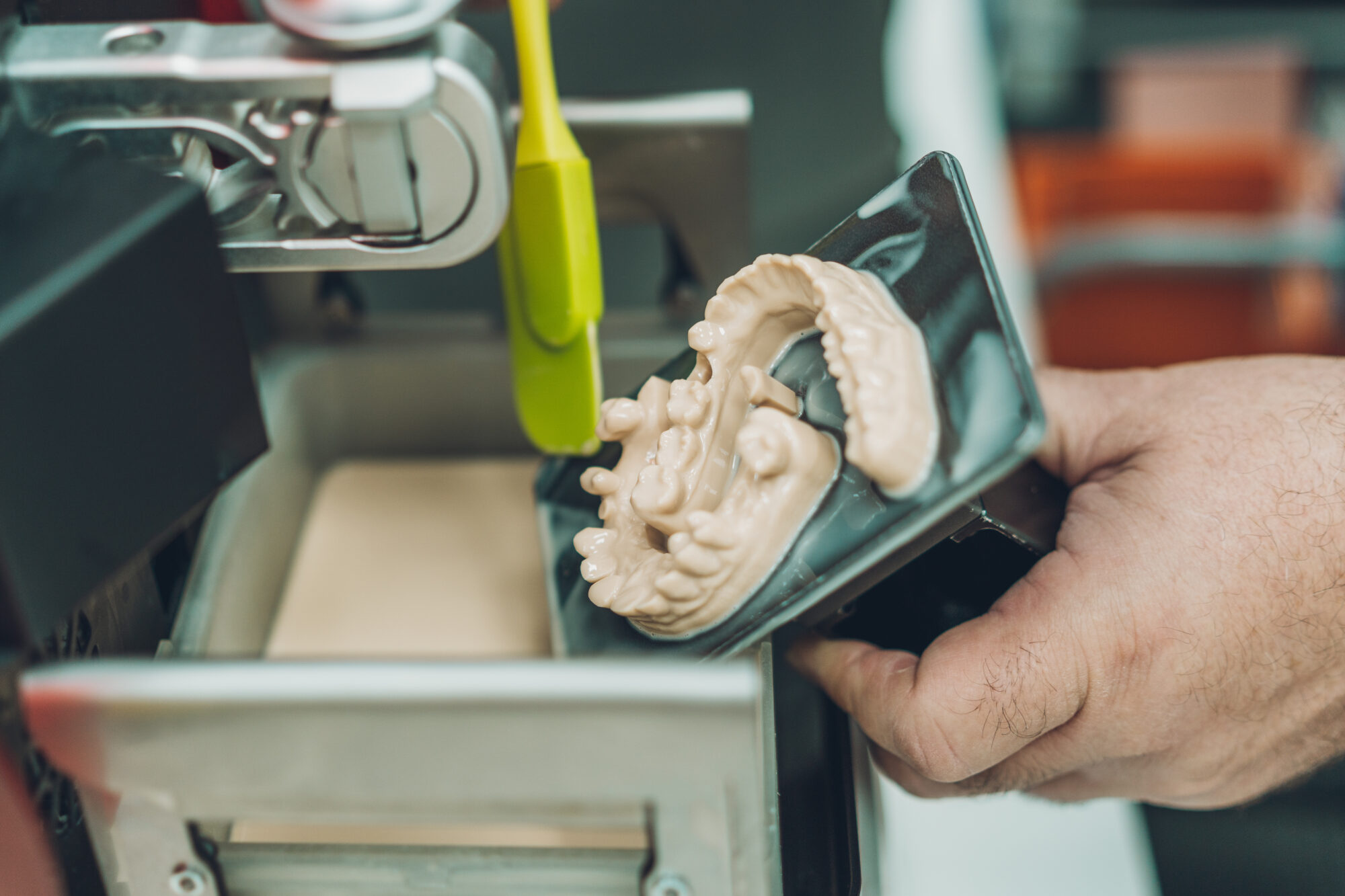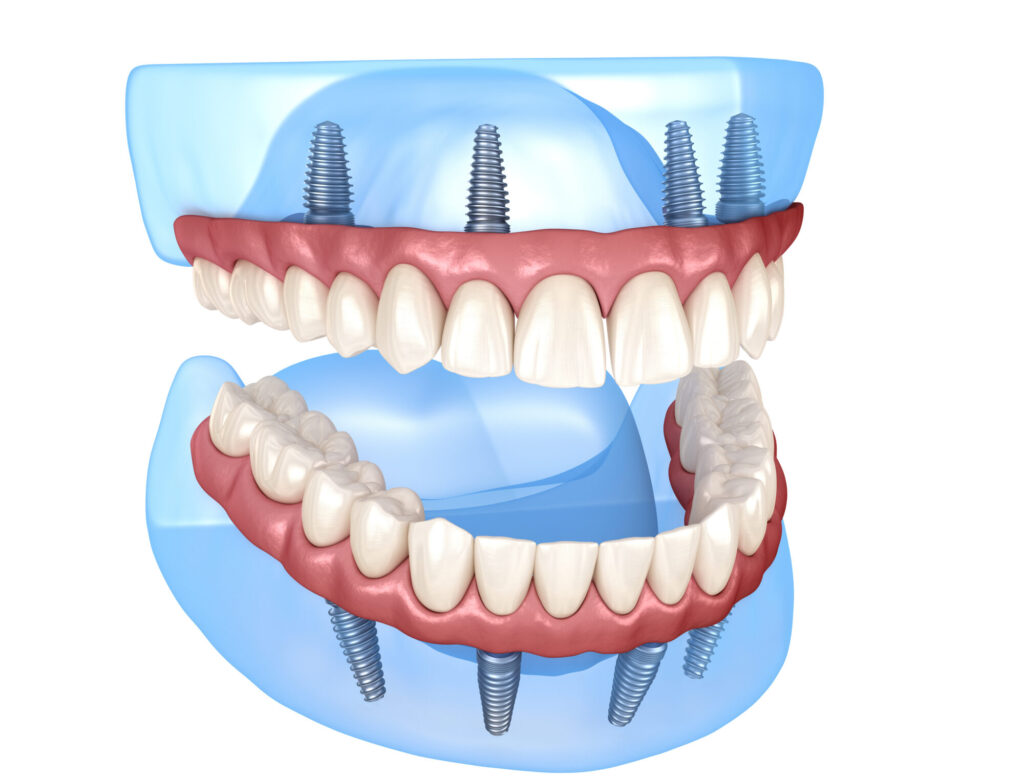
One of the most revolutionary inventions of the past several years is the 3D printer. These fascinating machines have made it possible for inventors, engineers, manufacturers, hobbyists, and even casual DIYers to manufacture complex devices and components quickly and without the expense of machining individual parts or tooling up for mass production.
However, few fields have been able to embrace 3D printing technologies quite as effectively as the medical and dental sciences. 3D printing is now used to create everything from dentures to artificial hips and knees. The technology is affordable enough and fits in a small enough space that even individual practices can keep a 3D printer on hand to create medical or dental prostheses quickly and accurately on a surprisingly fast timeline.
In this article, we’ll take a look at how the experts at Athens Oral Surgery Center can use 3D printing technology to create a complete set of teeth in a day, helping our patients get their smiles back faster than traditional offsite manufacturing methods.
What Is 3D Printing?
3D printing is a term used to describe several different technologies, but all do roughly the same thing – they take a digital 3D model of an item and duplicate it in real life, using any one of dozens of different materials.
If you’re familiar with 3D printing already, you’re probably familiar with the common fused-deposition modeling technology – printers that melt and extrude plastic in a specific shape, layer by layer, until a final model is created. These printers are available in a huge variety of sizes and functionalities to print a wide range of objects.
For dental applications, a different technology is used. Dental appliances must be made out of a biocompatible material that can replace natural bone or other tissues without breaking down or being rejected by the body’s immune system. Since these materials can’t be used with fused-deposition printers, a technology known as stereolithography is used in conjunction with a special ceramic resin.
In a stereolithography-powered printer, a basin is filled with the appropriate resin, and a unique light source selectively hardens some of the resin, resulting in a thin layer of solid resin in a specific shape. After enough layers of material are built up, the model is finished and can be removed from the resin bath.
What Are Teeth in a Day?
When a patient requires a complete set of dental implants to replace worn, broken, missing, or otherwise degraded teeth, one increasingly popular option is the “teeth in a day” protocol, also sometimes called “All-on-Four” implants.
With the teeth in a day protocol, a patient’s existing teeth are extracted, and four surgical implants are embedded in each jaw – four on top, four on bottom. While the implants are being embedded, the dental practice’s fabrication specialists go to work using a specialized 3D printer to make an entire set of temporary teeth that can then easily be attached to the patient’s implants at the end of the day.
The patient can then go home with a complete set of secure, fully functional teeth that will serve them well until their permanent appliances are ready for installation.
How 3D Printing Enables Teeth in a Day
The “teeth in a day” protocol would not be possible without 3D printing technology. As each human’s mouth is shaped differently, each set of dental appliances has to be shaped differently. In the past, that meant using an imprinting medium – usually a sticky, messy type of wax – to take an impression of the patient’s teeth and gums.
That impression was then sent off to a manufacturing facility, where skilled technicians manually shaped a new set of appliances to fit the individual’s mouth. This process typically took weeks to complete and was entirely reliant on the workflows of the offsite fabrication labs.
Today, all of the manual processes are removed from the equation. Instead of a messy wax impression, a special digital scanner is used. This device, known as an intraoral scanner, is used to create an incredibly detailed 3D digital model of the patient’s mouth. The process is fast and entirely painless.
That 3D model can then be manipulated in the computer, and a complete set of teeth can be created virtually.
When the finalized 3D model is sent to the stereolithography 3D printer, the device works incredibly fast, turning out a complete set of appliances in less than a day.

What Are the Advantages of Teeth in a Day?
More Successful Healing
The biggest impediment to successful dental implants is improper healing, usually encountered during the period between the installation of the implants and the attachment of the dental appliances. With teeth in a day, the implants are never left uncovered. As soon as they’re implanted, the temporary appliances are attached, providing protection for the underlying tissue and speeding up the healing process.
Faster Return to a (Modified) Solid Diet
While your temporary appliances are in, you can go right back to eating many of the foods you enjoy. While you should still avoid tough, chewy foods until your permanent appliances have been installed, you can still enjoy pasta, chicken, salad, and many of your other favorite foods. A good rule of thumb for eating with 3D-printed temporary appliances is that it’s safe to eat foods that you can cut with a fork.
Better Bone Preservation
With the teeth in a day process, you are far less likely to lose considerable bone mass over other dental implant processes. By installing all implants at the same time, the jaw is never given the opportunity to deteriorate at the site of an extraction, and bone structure remains essentially the same as it did when you still had natural teeth.
Athens Oral Surgery Has the Technology to Get Your Smile Back With Teeth in a Day.
Dr. Tomlinson and his team can schedule a teeth in a day / All-on-Four procedure and have you smiling again in no time. Schedule an appointment by calling 706-549-5033.
Related Articles:
